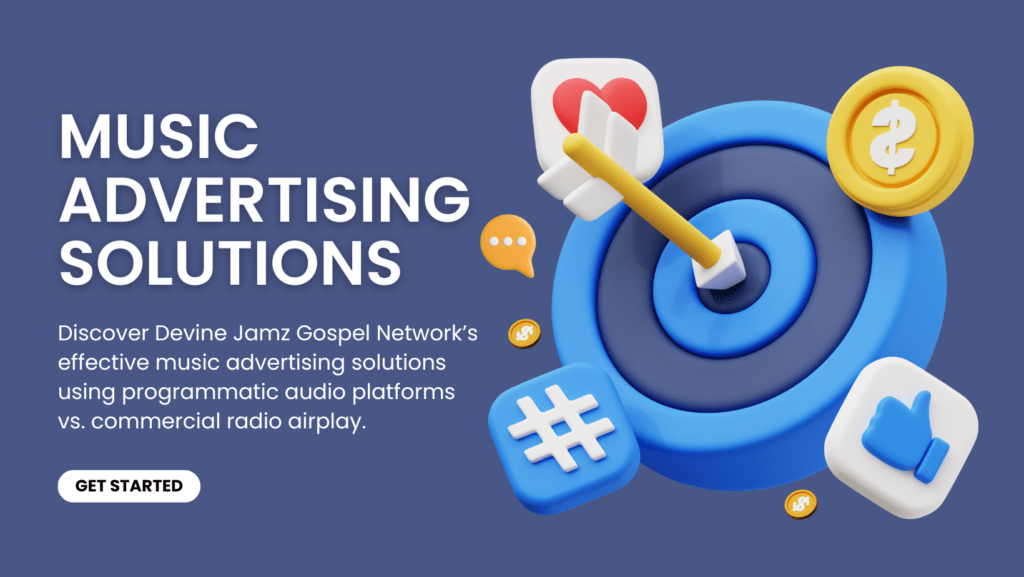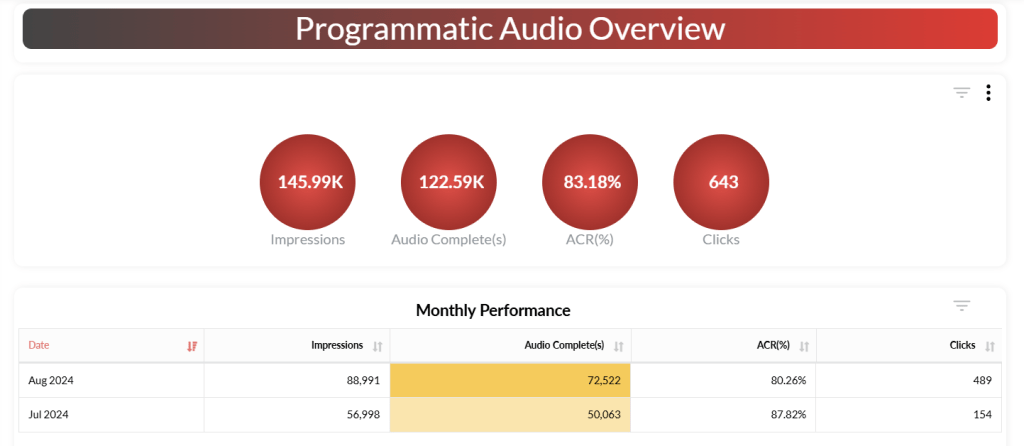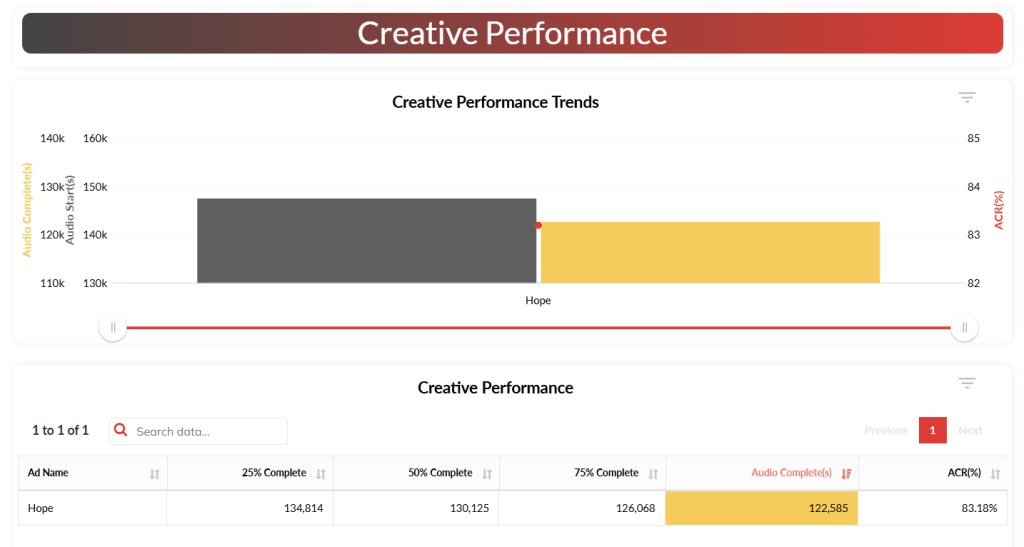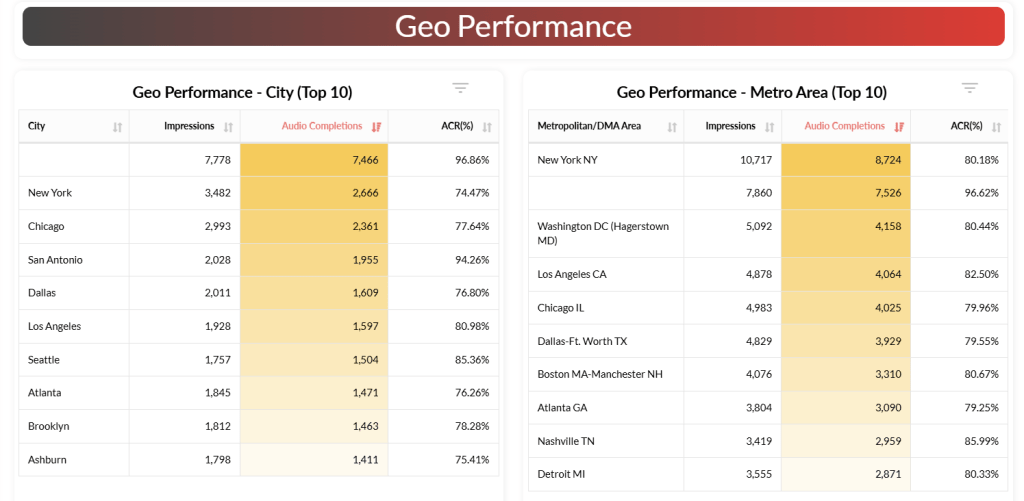In the rapidly evolving music industry, artists must navigate a complex landscape of marketing options to promote their work effectively. Among the most potent methods available today are music advertising solutions like programmatic audio ads and traditional commercial radio airplay. Both avenues offer unique benefits, but understanding their differences can help artists and labels make informed decisions, particularly when working with limited budgets.
Programmatic audio ads are a revolutionary tool in the realm of music advertising solutions. These ads are automated and tailored to specific listeners, delivered via streaming services, podcasts, and internet radio. In contrast, commercial radio airplay broadcasts ads to a broad, undifferentiated audience. While traditional radio has long been a staple for promoting new music, programmatic audio offers a more targeted and data-driven approach, making it an increasingly popular choice among artists.
Targeted Audience Reach
One of the significant advantages of programmatic audio ads over commercial radio airplay is the ability to target specific audiences. With programmatic platforms, artists can zero in on listeners based on demographics, interests, and even location. For instance, an indie artist can target listeners who frequently engage with indie playlists or follow similar artists. This precision ensures that the ads reach those most likely to appreciate the music, which is a more effective use of advertising budgets.
On the other hand, commercial radio airplay tends to cast a wider net, reaching a broad audience without the granular targeting capabilities of programmatic audio. While this can be advantageous for artists seeking mass exposure, it often results in less efficient ad spend, particularly if the music does not resonate with a significant portion of the audience.
Cost-Effectiveness in Music Advertising Solutions
When it comes to music advertising solutions, cost-effectiveness is a crucial consideration, especially for independent artists and small labels. Programmatic audio ads generally offer more flexible pricing structures, allowing artists to set their budgets and only pay for ads that are actually played. This pay-per-play model ensures that every dollar spent contributes to reaching the intended audience.
In contrast, commercial radio airplay typically involves higher upfront costs, and the results can be less predictable. Artists may pay a flat rate for their ads to be aired, without the assurance that the ads will reach listeners who are genuinely interested in their genre. For those with limited budgets, this can make commercial radio a riskier investment.
Allocating a Budget Strategically for Online Gospel Music Marketing
Measurable Results and Real-Time Adjustments
Another advantage of programmatic audio ads in the realm of music advertising solutions is the ability to track and measure results in real-time. Platforms provide detailed analytics, showing how many people heard the ad, engaged with it, and took actions such as streaming the song or visiting the artist’s website. This data-driven approach allows for continuous optimization of campaigns, ensuring that artists can adjust their strategies for maximum impact.
Commercial radio airplay, while still valuable for broad exposure, lacks the same level of measurable feedback. Artists may know how often their ad is played, but they often do not have access to detailed listener engagement metrics. This lack of data can make it challenging to assess the effectiveness of the campaign and refine future advertising efforts.
Flexibility and Creative Control
Flexibility is another area where programmatic audio ads shine as part of music advertising solutions. Artists have greater control over where and when their ads are played, which is crucial for aligning ad placements with a release schedule or a tour. Moreover, the creative possibilities are nearly endless. Artists can experiment with different ad formats, messages, and even languages, tailoring their content to resonate with different audience segments.
In contrast, commercial radio ads are generally more standardized. While radio spots can still be creatively engaging, the format is often more rigid, and the opportunities for customization are limited. This can make it more challenging to create a personalized connection with listeners, which is increasingly important in today’s music landscape.
Leveraging Geo-Targeting in Music Advertising Solutions
Geo-targeting is another powerful feature of programmatic audio platforms that enhances music advertising solutions. Artists can focus their advertising efforts on specific regions or cities, which is particularly useful when promoting a tour or targeting areas where they have a strong fan base. By creating localized campaigns, artists can build a buzz in key markets, driving both local engagement and ticket sales.
Commercial radio airplay, while also capable of regional targeting, often lacks the precision of programmatic platforms. Radio stations typically cover broad areas, and while an artist can choose stations in specific regions, the lack of detailed geographic targeting can result in less effective campaigns.
Integration with Other Digital Platforms
The integration of programmatic audio ads with other digital platforms is a game-changer for music advertising solutions. These ads can be seamlessly connected with social media, video platforms, and even direct artist websites, creating a cohesive and comprehensive marketing campaign. For example, an ad played on a streaming service can direct listeners to follow the artist on Instagram or watch the latest music video on YouTube. This interconnected approach amplifies the reach and effectiveness of the campaign, fostering deeper engagement with fans.
In contrast, commercial radio airplay operates largely within its own ecosystem. While a radio ad can certainly drive awareness and interest, it often requires additional efforts to connect listeners to other digital touchpoints, such as social media or streaming platforms. This extra step can sometimes lead to a drop-off in engagement, making it harder to maintain momentum across multiple platforms.
Conclusion: Choosing the Right Music Advertising Solutions
When deciding between programmatic audio ads and commercial radio airplay as music advertising solutions, the choice largely depends on the artist’s goals, budget, and target audience. Programmatic audio ads offer precision, flexibility, and measurable results, making them an excellent choice for artists looking to maximize their reach on a limited budget. On the other hand, commercial radio airplay can still be a valuable tool for achieving mass exposure, particularly in regions where radio remains a dominant medium.
For artists and labels seeking to navigate the complexities of modern music marketing, partnering with an experienced music promotion company like Devine Jamz Gospel Network can be a strategic advantage. By leveraging a combination of programmatic audio platforms and traditional radio airplay, they can create a balanced, effective marketing strategy that drives both awareness and engagement.
In a world where digital and traditional media converge, the most successful music advertising solutions are those that embrace the strengths of both programmatic and radio platforms, ensuring that artists can reach the right audience at the right time with the right message.
Peer-reviewed References and other Authoritative Sources:
1. Brouwer, E. R., & Erkan, E. (2022). "The Impact of Programmatic Audio Advertising on Consumer Engagement." Journal of Advertising Research, 62(3), 286-295.
- This study provides insights into the effectiveness of programmatic audio advertising and its impact on consumer engagement, offering a solid foundation for understanding the advantages of targeted audio ads over traditional methods.
2. Hedman, J., & Gimpel, G. (2021). "Digital Advertising Transformation: From Broadcast to Programmatic." Journal of Media Business Studies, 18(2), 102-119.
- This article discusses the shift from traditional advertising models, like radio, to digital and programmatic formats, highlighting the cost-effectiveness and flexibility of digital platforms.
3. Zhou, M., & Peters, K. (2020). "Geo-Targeted Audio Advertising: A Case Study of Programmatic Campaigns." International Journal of Market Research, 62(4), 450-467.
- This case study explores the use of geo-targeting in programmatic audio advertising, emphasizing the strategic benefits for music marketers aiming to reach specific audiences.
4. Smith, A., & Rogers, T. (2019). "Evaluating the Reach and Effectiveness of Commercial Radio Advertising." Journal of Broadcasting & Electronic Media, 63(1), 90-105.
- This research analyzes the effectiveness of commercial radio advertising and compares it to emerging digital ad platforms, providing valuable insights into the strengths and weaknesses of both.
5. IAB (2021). "Programmatic Audio Advertising: Trends, Strategies, and Best Practices." Interactive Advertising Bureau.
- A comprehensive industry report from the IAB that outlines current trends in programmatic audio advertising, offering data and best practices for maximizing ad effectiveness.
6. McKinsey & Company (2020). "The Future of Audio Advertising: Leveraging Digital Transformation." McKinsey Insights.
- A report by McKinsey that explores the ongoing digital transformation in advertising, with a focus on the potential of programmatic audio platforms to disrupt traditional models like commercial radio.
This post contains affiliate links, meaning we may earn a commission if you make a purchase through our links, at no extra cost to you. Your contribution helps sustain our blogging and supports our efforts to provide informative and valuable information. Even though Devine Jamz Gospel Network receives compensation for our posts or advertisements, we always give our honest opinions, findings, beliefs, or experiences on those topics or products. The views and opinions expressed on this website are purely of Devine Jamz Gospel Network. Any product claim, statistic, quote or other representation about a product or service should be verified with the manufacturer, provider or party in question.
Related Posts:
 How to Sell Your Content Management System or Online Business
How to Sell Your Content Management System or Online Business
 Recording Artists Must Ensure Their Websites Be SEO-Optimized
Recording Artists Must Ensure Their Websites Be SEO-Optimized
 Exciting News: Celebrating the Impact of AngelicVoicesMusic’s New Music Video “Why Not” ft Asim I.I.
Exciting News: Celebrating the Impact of AngelicVoicesMusic’s New Music Video “Why Not” ft Asim I.I.
 “This Is the Day that the Yah Has Made” – by Minister John E. Black
“This Is the Day that the Yah Has Made” – by Minister John E. Black
 Why Recording Artists Need a Website for Control, Exposure, and Revenue
Why Recording Artists Need a Website for Control, Exposure, and Revenue
 Promote Christian Gospel Music With The Best Digital Assets
Promote Christian Gospel Music With The Best Digital Assets
 Klipht0n’s New Single ‘I Shall Leap’ is a Declaration of Faith
Klipht0n’s New Single ‘I Shall Leap’ is a Declaration of Faith
 How To Use Search Engines To Market Music
How To Use Search Engines To Market Music






